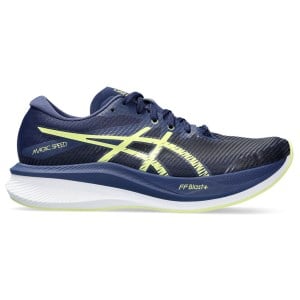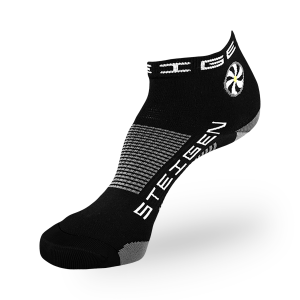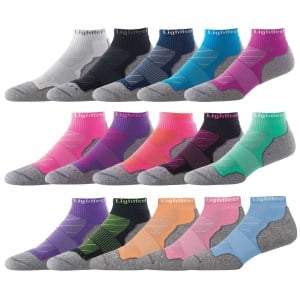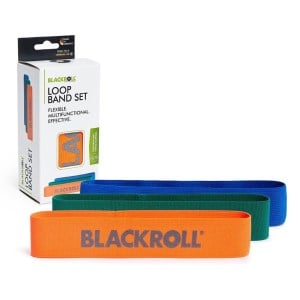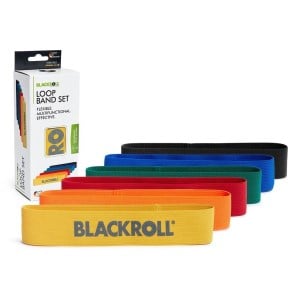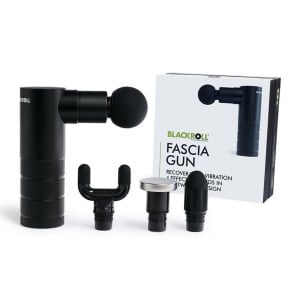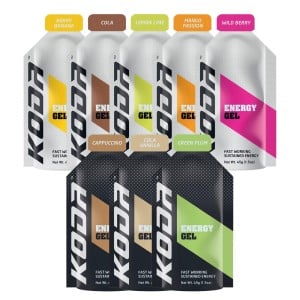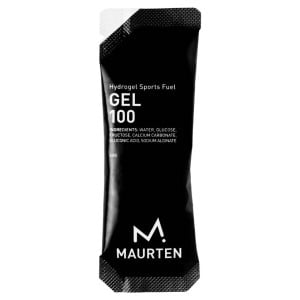12 (Half) Marathon Training Tips For Beginners
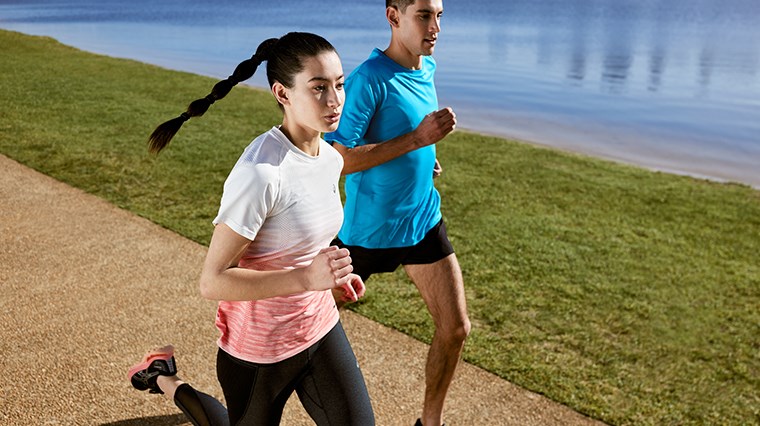
Congratulations! You’re setting out on the fulfilling and inspiring goal of running a marathon and Sportitude Running is proud to be a part of your journey. For many of us, running a marathon is a bucket list item that settles under the proverbial dust over time – but we’re here to tell you with preparation and perseverance you can shake off the dust, train hard and be sweat drenched and smiling with accomplishment as you cross the finish line in a few months’ time.
Sportitude's 12 (half) marathon training tips and marathon gear checklist will set you up for success on race day. It's important to note that this is a marathon training guide and the proper way to train for a marathon varies from person to person - in the same way the best running shoes for you may not be the best fit for your running buddy.
Marathon training is an amazing way to enjoy the positive benefits of running on your mental health and build momentum for your future fitness. When you flow into a marathon training plan that works for you and your lifestyle, you'll grow confident in your body and mental resilience to stay on track.
Whether you’re a beginner looking to turn running into your new healthy habit by sparking your motivation with a fitness goal, or want a refresher course in marathon training to keep ticking off your major marathon bucket list, Sportitude Running has got you covered.
1. Sign up to a (half) marathon to solidify your goal
To turn your running goal into a reality, first things first, do your research and sign up to a (half) marathon. Simply through the act of writing it down and signing up makes your goal ‘fixed’, even if your training itself is flexible which we’ll discuss in further detail below.
As a marathon beginner your best bet is to commit to a 10K race or half marathon. As the old idiom goes, walk before you run. For inexperienced marathoners, a half marathon distance of 21km feels a lot more achievable than a gruelling (yet rewarding) 42.2km marathon. Your running goal should be challenging, but not feel so far distant that it is unattainable.
Depending on your fitness level, give yourself around 3 - 4 months to train your mind and body to be half marathon-ready. For a full marathon, plan for a time frame of 5 - 6 months if you have an active lifestyle or 9 months if you’re starting from a sedentary lifestyle.
2. Buy the best marathon shoes (for you)
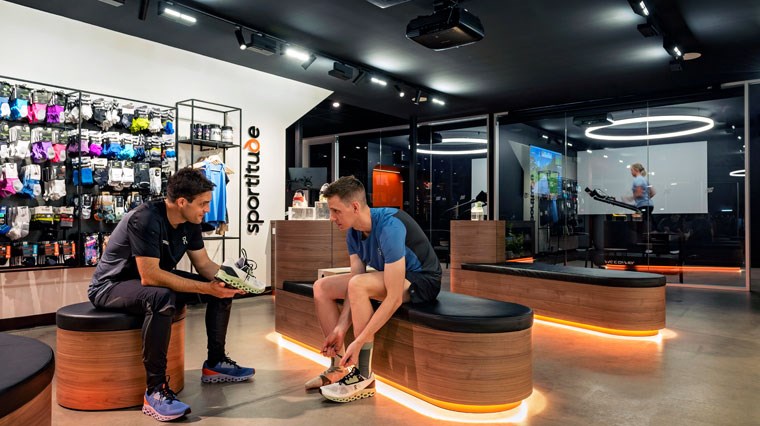
You’ve signed up to a marathon or half marathon and the date is set. Ignite your motivation and reward yourself by buying the right marathon gear from head-to-toe. For endurance running we recommend well-cushioned, high mileage running shoes that’ll help protect your feet from repetitive impacts on the road and ward off fatigue.
Take care of your feet by wearing the best running shoes for you. This is critical to keep you steadily but consistently climbing closer to your running goal without injury putting you on the sidelines. What you wear off the road can also make a difference, with recovery shoes helping prevent plantar fasciitis and giving your beat up feet a break.
Different running shoes within the same brand, same family or even the same model and generation (as the cushioning properties wear out over time), will distribute stress to your feet, ankle, knees and hips in different ways - so it pays to know the benefits of running shoe rotation.
Having a minimum of two shoes in your marathon training rotation will help prevent specific muscles and tendons being overworked while strengthening others. But what is the best marathon training and race day shoe for you?
Sportitude's RunDNA shoe fitting service helps match your feet to top running shoes with our proprietary comfort algorithm and research-based gait analysis - ensuring your marathon shoes provide a feel, fit and function personalised to you. To discover the best running shoes for your marathon training, book your RunDNA assesment today.
Alternatively, no matter where you are in Australia you can book a free 15 minute video chat in a Live Fit session to connet with our Sportitude shoe experts and get personalised advice on your shoe purchases.
If you’re a South Australia resident, after purchasing your new running shoes you can put the empty shoe box to good use by turning it into a Shoe Box Of Love – filling it with much-needed essentials to support disaster-affected individuals, families and communities.
3. Pace your marathon training: Gradually increase distance & intensity
Whether training or racing, your pace of progression makes a difference. Now that you’re fully committed, it’s tempting to give every training session your all. However, giving your all doesn’t mean you should run at your maximum capacity in speed or endurance every time you hit the road.
It’s important to train according to your fitness level at the stage you are at in life (e.g. getting back into running safely after childbirth) by gradually increasing speed/intensity or distance to avoid injury, overtraining and hitting a wall. Recovery days can include lower-intensity exercise like swimming, cycling or yoga that we’ll discuss in more detail below – but it’s also valuable to have at least one rest day a week that’s just for – you guessed it – rest!
Steadily increasing distance or intensity at one time will allow your body to adapt – and your progress doesn’t have to be strictly linear. Naturally there will be ups and downs, but if you prefer to run-by-numbers, our blog on how to measure & increase training load for runners can guide you, and even better if you have access to the advice of a personal trainer.
Once you master a particular pace and distance, it’s important to increase the challenge so your performance doesn’t plateau. It helps to vary your training with long runs, tempo runs and uphill running to increase both speed and stamina.
Listen to your body is a popular phrase of coaches and runners for a reason. During your marathon training it’s important to do a mental ‘body scan’ to be conscious of specific areas of soreness that need to be addressed – whether it’s something simple like investing in a pair of anti-blister technical running socks, or something more serious that may cause you to rethink your recovery plan.
Be aware of the difference between running pain vs discomfort to know when to slow down and avoid any niggles becoming full-blown injury.
4. Wear your marathon gear during training
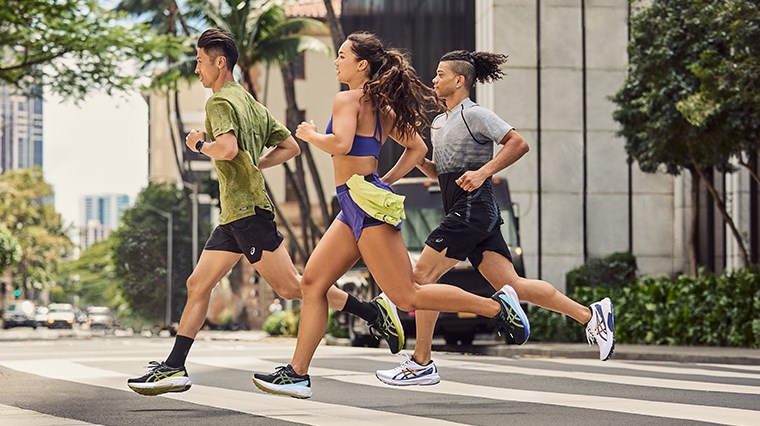
You may be excited to wear brand new running shoes or running clothing when race day rolls around, but this can be a risky move. Putting your gear to the test in real-world training will allow you to identify any points of irritation – whether it’s chafing seams, hot spots in your running shoes or running socks that refuse to stay up.
Choosing brand name sportswear like Asics, Adidas and Nike allows you to shop confidently – setting you up with lightweight and sweat-wicking performance fabrics that are marathon-ready and ground-breaking road racing shoes to go the distance. Our marathon survival kit gives you specific suggestions of marathon gear and marathon clothing you'll love.
Personal preference is also a factor. For example, there is a phenomenal variety of technical running socks, from ultra-thin and barely there Steigen running socks to Lightfeet running socks with plush padding in targeted zones, to the distraction-free comfort of Balega running socks. Try out a variety of styles to ensure every piece of your marathon kit runs in harmony for zero distractions on race day.
5. Ignite your marathon motivation & join a running club
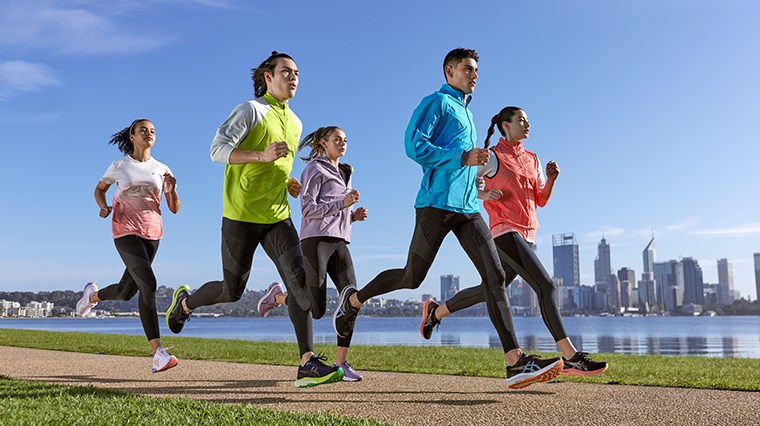
Motivation isn’t naturally self-sustaining. There will be days when lacing up for marathon training feels just as challenging as running the marathon itself.
Surround yourself with a support network to fuel your enthusiasm with their encouragement and to nurture your positivity. If possible, train with fellow runners in a non-competitive environment to allow you to train for endurance without the pressure of setting a faster pace (unless this is your ultimate goal).
Joining the parkrun phenomenom or a running club like Adelaide’s Torrens Park Run Club or RunAsOne will allow you to soak in the energy of runners of all backgrounds and abilities, with the added benefit of providing consistency to your training with scheduled run sessions each week. Running clubs may also provide coaching services to help guide you – from nutrition and recovery to training itself.
Inspiration can take many forms and can help you keep mentally fit – exercising your motivation like a muscle. Seek out people that ignite your passion for running - from your family and friends, to inspiring podcasts and blog posts like those in our Marathon Hub, to following your favourite athletes and their journeys like motivational marathoner and mum Jessica Stenson.
6. Track your training progress & know your heart
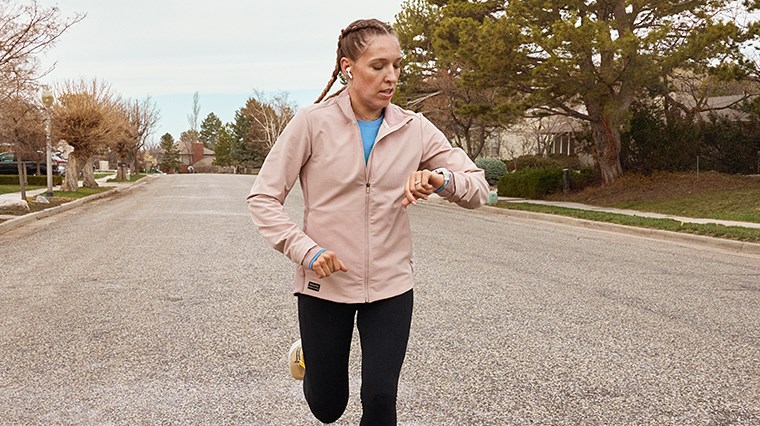
Although you’ll be in a crowd of potentially hundreds of runners on marathon day, as a beginner you’re only ever racing against yourself. Track your progress during training with a sports watch to get a hit of motivation as you shed seconds off your previous times and consistently tick off your training sessions for the week.
Sports watches are your wearable personal trainer – providing insight on your real-time performance including distance, pace, cadence and stride length as well as your internal training load such as your heart rate and sometimes even the oxygen saturation of your blood (SpO2). In the case of the Corex Apex Multisport GPS Watch, it analyses your overall exertion to suggest when you should wind down to guide your recovery.
For an extra feel-good benefit, running apps like Strava and the Nike Run Club app are an excellent way to connect with other runners and share your progress – motivating both you and them.
If you want to run pressure free without the burden of feeling like you have to set a specific time, it’s OK to leave your sports watch at home once in a while or to simply respect the fact that a recovery run is just that. Don’t feel like you have to set a new PB every time you hit the pavement to train.
7. Be flexible in your marathon training
Flexibility is beneficial to so many aspects of your marathon training. Sometimes you’ll miss a scheduled training session and that’s OK – don’t be tempted to double up on the intensity when you next hit the road, or you run the risk of burning out. Simply lace up, carry on and aim for consistency going forward.
Consistency doesn’t have to be at the cost of flexibility. Training for a marathon can be a juggling act when you have multiple commitments – be kind to yourself in finding a balance between your family life, work and training, and shuffle your training sessions around to fit as needed. Alongside helping fuel your motivation, this is another area where your support network is beneficial. For example, you can ask a trusted friend or partner to keep an eye on the kids while you train at a faster pace, or run as a family during your warm-up or recovery runs.
Flexibility also applies to your running environment and surface. You may have a go-to running circuit from your front door and back – and that’s fantastic. Seeing as your half marathon or marathon will likely be on a road surface, this will give you a feel of what to expect from your body on race day.
However, keeping your running route flexible with an occasional change of scenery can be positive to both body and mind. Switch the road for trail running once in a while - the softer surface will reduce the risk of overuse injuries while the natural environment sparks your feel-good vibes and inspiration.
8. Improve your endurance, strength & mobility with cross-training
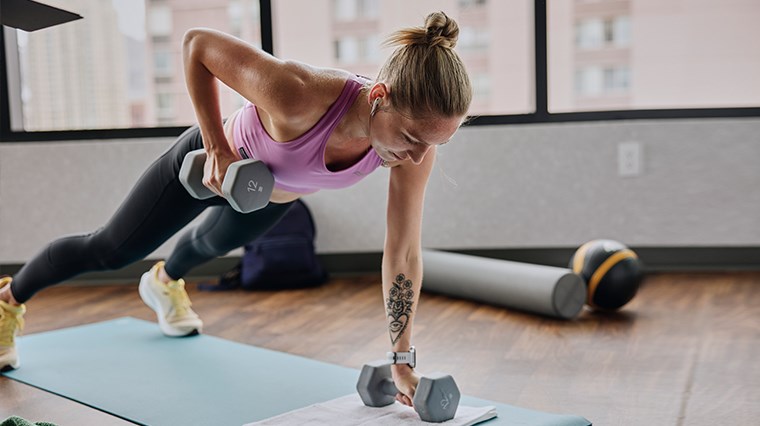
Some runners may cringe away the thought of doing anything other than running to train for a marathon – and as passionate runners, we understand. Running is the best! However, the benefits of cross-training shouldn’t be overlooked. Cross-training ensures your marathon training is well-balanced – keeping both body and mind fresh.
When we say cross-training we’re referring to the many ways in which you can vary your training that puts stress on your muscles in reduced or different ways – whether improving your flexibility, strength or stamina.
Running is a weight-bearing exercise that involves repetitive impacts on hard road surfaces. It can take a significant toll on the body through common running injuries like plantar fasciitis, Achilles tendonitis, stress fractures and shin splints.
Lower impact exercises like swimming and cycling have multiple benefits as part of your marathon training – increasing your aerobic fitness or cardio (heart) health to build endurance without applying significant force to your hard-working muscles and joints.
Although many runners prefer to keep their fitness outside the gym, strength training can also make your muscles less prone to injury – activating underworked muscle groups to adapt to new levels of stress and allowing you to literally run stronger. Although you can use your own bodyweight as resistance in strength training exercises (e.g. planks, push-ups, burpees, crunches, squats, lunges), setting up your home gym with dumbbells, kettlebells and resistance bands will give you a healthy dose of variety and self-encouragement.
You don’t need a lot of space – with this portable equipment you can turn a nook of any room into a home gym to encourage you to sneak in strength training as ‘exercise snacks’ in-between everyday activities. Explosive, plyometric exercises ('jump training') can add another dimension of movement to keep your strength training invigorating – it’s not all about the old school bicep curl!
On the other end of the spectrum, training for flexibility and mobility through mat-based workouts like yoga and Pilates can help keep your muscles limber, run-ready and in top form while providing a mental outlet to unwind. It’s all about prioritising the self-care of your mind and muscles to keep you on track of your marathon training.
-
Blackroll Loop Band Set - Fabric Resistance Band - 3 Band Set
-
Blackroll Loop Band Set - Fabric Resistance Band - 6 Band Set
9. Focus on quality sleep, self-massage & nutrition to support your recovery

It’s worth emphasising the importance of supporting recovery from the inside out as it’s a frequently overlooked yet vital part of your marathon training. To perform at your peak, your body needs quality sleep. Obviously, we need sleep for energy but its benefits are much deeper than that. It’s during sleep that your body is the most efficient at performing muscle repair. Understanding how to improve your sleep can give you a major edge when seeking to elevate your athletic performance.
Recovery isn’t just about what you do after your run – but what you eat, drink and how you take care of your muscles all plays a part. From foam rolling to massage guns, stretching and massage is a critical part of your self-care during your marathon training and the health of your muscles. It helps gradually stimulate muscles and improve flexibility pre-workout, and release tension and tightness post-workout to aid in injury prevention.
Your sports nutrition is also an essential part of recovery – with products like PILLAR Performance helping you fill nutritional gaps on your diet by boosting your intake of magnesium and other vital nutrients, and PREPD Hydration to increase your fluid absorption during marathon training and race day. It’s also worth taking the sweat rate test to help guide your water intake to support performance and recovery.
10. Eat healthy sports nutrition & plan your marathon fuel
Plan for the worst, but also plan for what you can control – like what you eat. During your months of training, focus on a sports nutrition plan that includes a balance of wholegrain carbohydrates and lean protein – carbs as your primary source of energy and protein for muscle growth and repair. Quality nutrition will benefit both your performance and recovery.
If you train consistently you probably have an increased appetite. Your training load, genetics, body weight and food intolerances (if any) will all have an influence on the best nutritional plan for you.
Pay special attention to your race day nutrition including what you eat the day prior – looking at meals that provide energy without any unforeseen effects. For example, although high fibre meals are recommended as a part of a healthy training plan and lifestyle, in the day’s preparation leading up to your race low fibre foods are generally a safer option.
High fibre, complex carbs are more challenging for your body to digest than low fibre carbs. This is typically a good thing for digestive system health, providing slow-releasing energy that keeps you fuller for longer. However, when your body must distribute its energy between digestion and intense physical movement like running, this can lead to digestive upset like the dreaded ‘runner’s trots’.
Test out meal options during marathon training and stick to those that keep you running happy for race day to avoid bloating or digestive discomfort. This also applies to your on-the-go fuel like energy gels.
With a plethora of research-based sports nutrition products available - from Koda energy gels and Maurten energy hydrogels, to Tailwind Nutrition Endurance Fuel - you can discover an electrolyte-rich product that provides easily digestible carbs while being gentle on your stomach on race day.
Are you planning to carry water on race day with a running hydration pack, or are you going to rely on water stations? There’s a lot of elements to consider. Some coffee drinkers prefer to skip their morning cuppa on race day as it’s a mild diuretic (increases urination), whereas others prefer to stick to their routine and have that hit of energy-boosting caffeine. It’s all about finding what works for you.
11. Taper in the weeks before your marathon
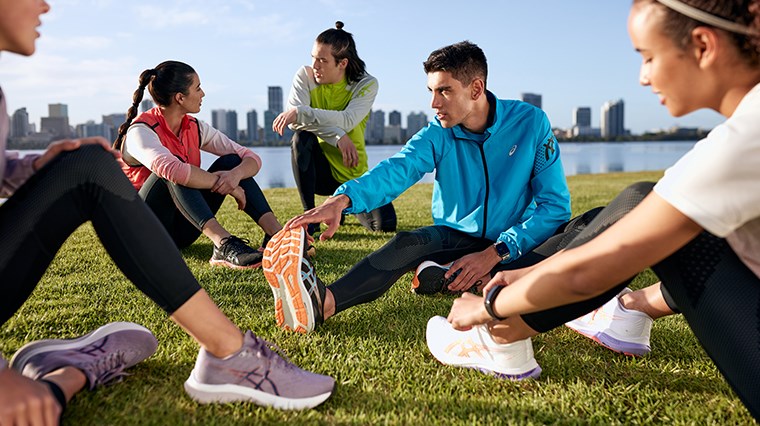
As race day approaches, save your energy. Don’t be tempted to run a marathon distance the day before your marathon.
In the 2 – 3 weeks approaching your race, your prioritises should shift to ‘recovery mode’ more and ‘training mode’ less. In the running world, this is called a ‘taper’ period, and it’s a crucial aspect of your marathon training. At first it may sound counterproductive with your initial thought being, the best way to be a better runner is to run – but don’t forget our earlier tip on supporting your recovery.
It doesn’t mean you should retire your running shoes before the race even starts – but ideally, you should reduce the distance and intensity of your training load throughout this time period and trust in your months of marathon training. As a general guideline you can reduce your mileage by 25% in the second last week before your race, and 50% in the last week before your race.
You’ve put the hard work in, you’ve got this, and now it’s time to give your body the best possible opportunity to repair - keeping your mind fresh and muscles energised to stay primed for the starting line.
12. Let go of the 'perfect' marathon & have fun!
The perfect marathon does not exist. Things happen – from becoming tangled in your own shoe laces (these elastic tie-free shoe laces can help with that), to less-than-ideal weather, to needing to take a bathroom break mid-marathon (which is frustrating if you’re aiming for a PB).
Train for the worst and hope for the best – this way you’ll stay prepared for eventualities that would otherwise potentially throw you off on race day. It’ll also help you manage pre-race anxiety – knowing you’ve trained well and are ready for this. This means gearing up in a weatherproof running jacket and braving the elements rather than using rain clouds as an excuse to skip your training for the day.
Challenges build resilience. Keep in mind that you’re training and finishing times won’t be as strong in bad weather as in ideal conditions – and that’s OK. Don’t beat yourself up if things don’t go as planned. Remember, a successful race isn’t one that was run perfectly, but one that was run to the best of your ability for the conditions.
Happy running!
If you liked this, you'll love Sportitude Running's Marathon Hub. It provides a wealth of knowledge, performance-enhancing tips and inspiration to reach your marathon goals.
Also check out the blogs below to keep you motivated and marathon-ready:
17 Performance, Nutrition & Recovery Essentials To Survive Marathon Training
6 Major Marathons For Your Bucket List: Your Guide To Becoming A Six Star Finisher
6 Must-Run Marathons In Australia
Jessica Stenson On Goal Setting & Marathon Training As A Mum

